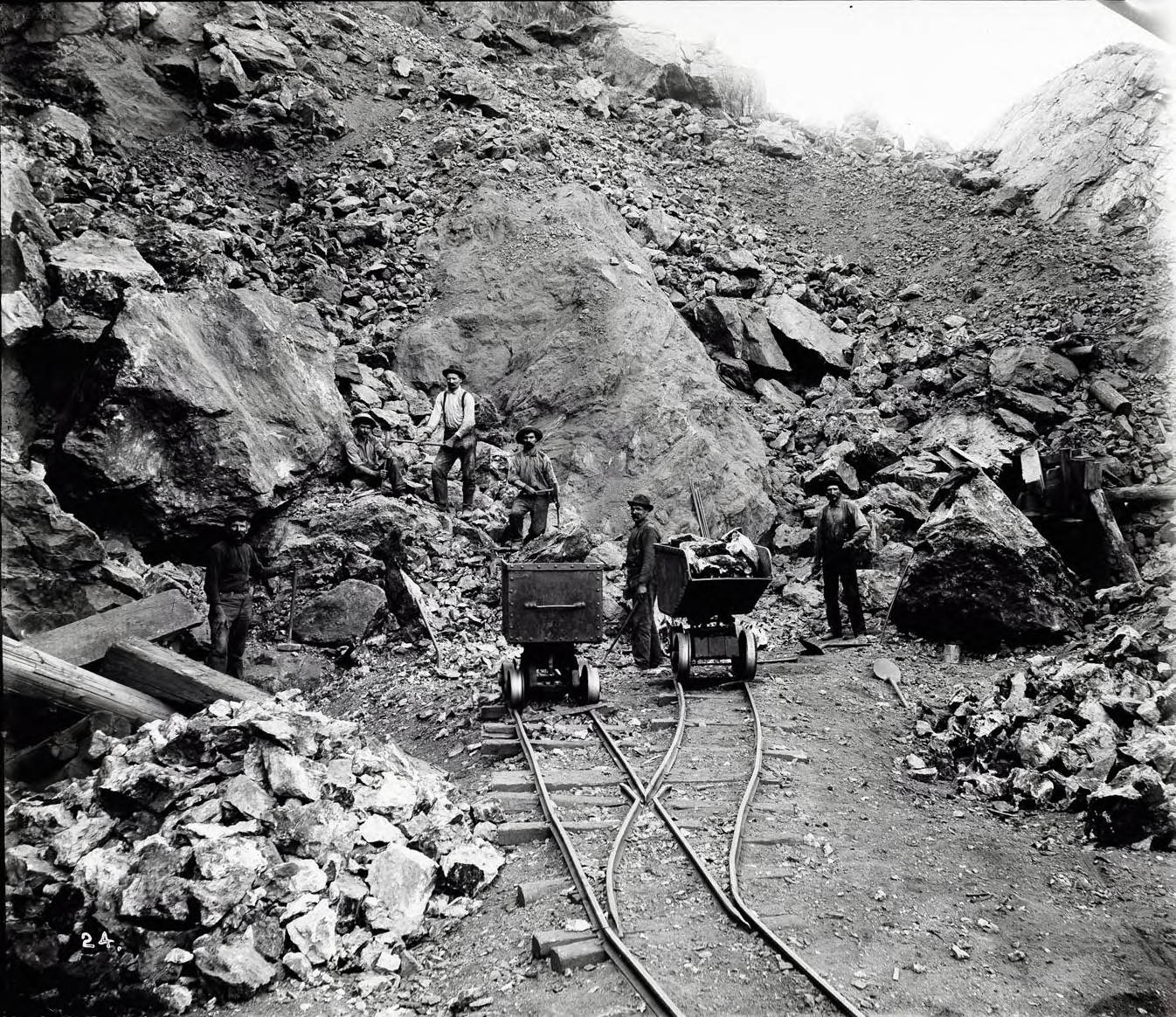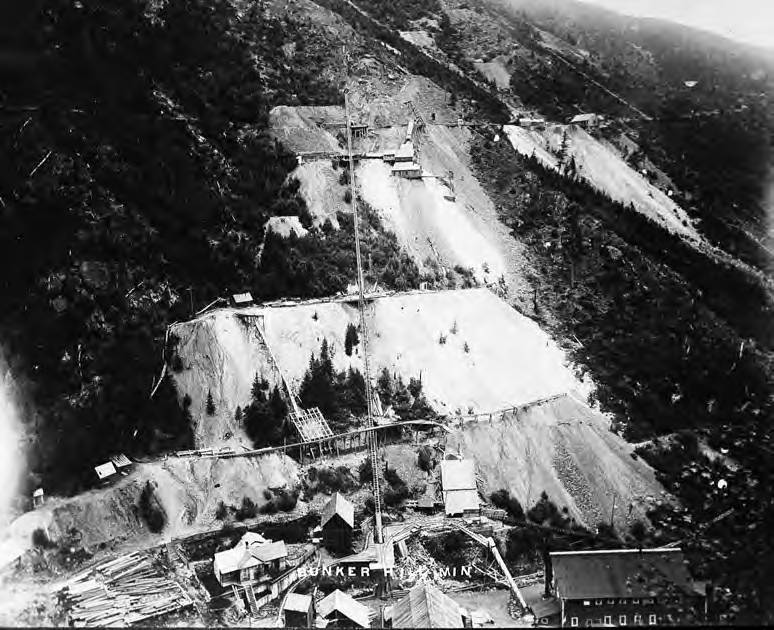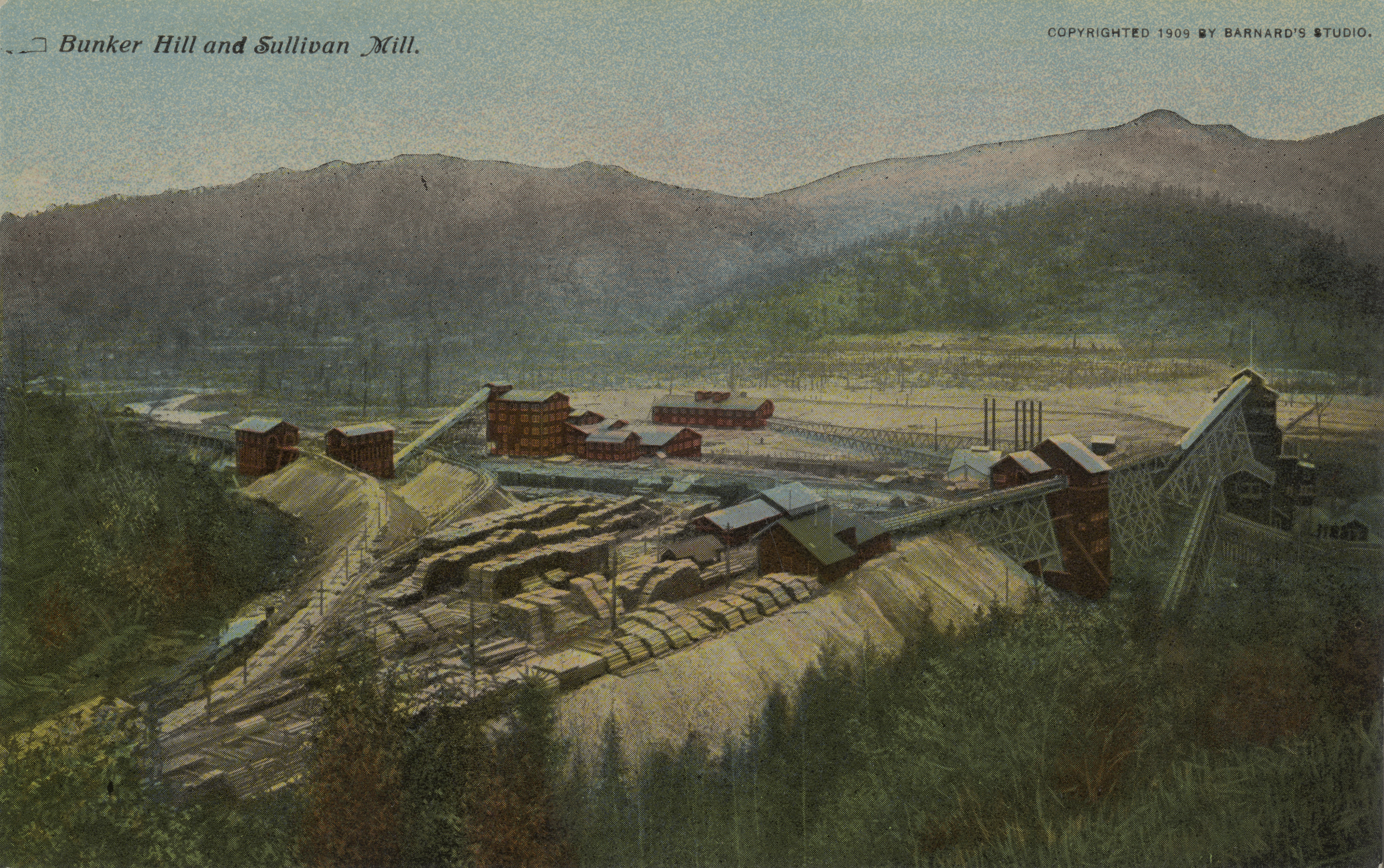In 1885, a prospector’s errant burro wandered off only to discover an outcropping of galena, a lead- and silver-rich ore. Within days, the Bunker Hill claim was established.
It grew from a strictly mining enterprise to a large industrial complex capable of carrying out every step in the production process from removing ore from the ground to fabricating finished metal products. The company became an important supplier of the nation’s requirements for lead, zinc, silver, and cadmium.
Starting with the original Bunker Hill and Sullivan claims, the Bunker Hill Mine later encompassed 620 claims totaling 6,2000 acres. From the discovery cuts some 3600 feet above sea level, over 20 major ore zones were mined to nearly 1600 feet below sea level, a vertical distance of about one mile.
At its peak the company produced corroding lead, antimonial lead, silver, special high grade zinc, zinc diecasting alloys, cadmium, specification lead alloys, leaded zinc oxides, dore metal, super purity antimony, sulfuric acid, and phosphoric acid at its Kellogg, Idaho, operations, and manufactured lead products such as sheet, pipe, sleeving, casting, solders, shot, lead oxides and battery oxide, red lead, antimonial lead, and soft and calking lead, at its Seattle, Washington, operations.
Sources
From the top: PG 8_x24, Bunker Hill “Glory Hole,” showing miners working at the site of the original location where galena was found, circa 1900. Location papers were nailed to a big cedar tree on September 10, 1885. PG 8_x535 Bunker Hill Mine, Wardner, Idaho, first workings of Bunker Hill, showing original outcrop and tramway, 1908. PG 9_09-7b, Bunker Hill and Sullivan Mill, published by Barnard’s Studio, Wallace, 1909.




